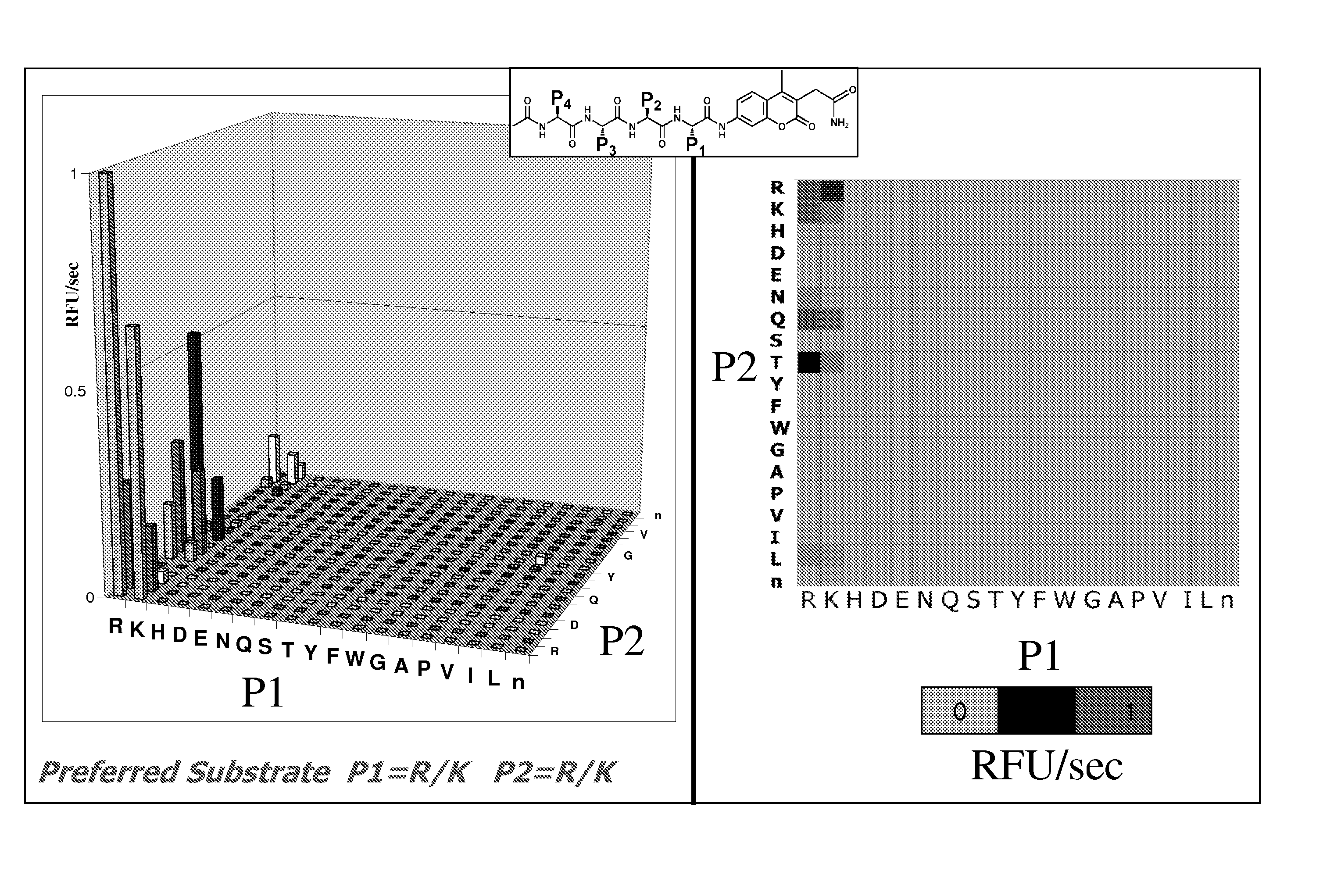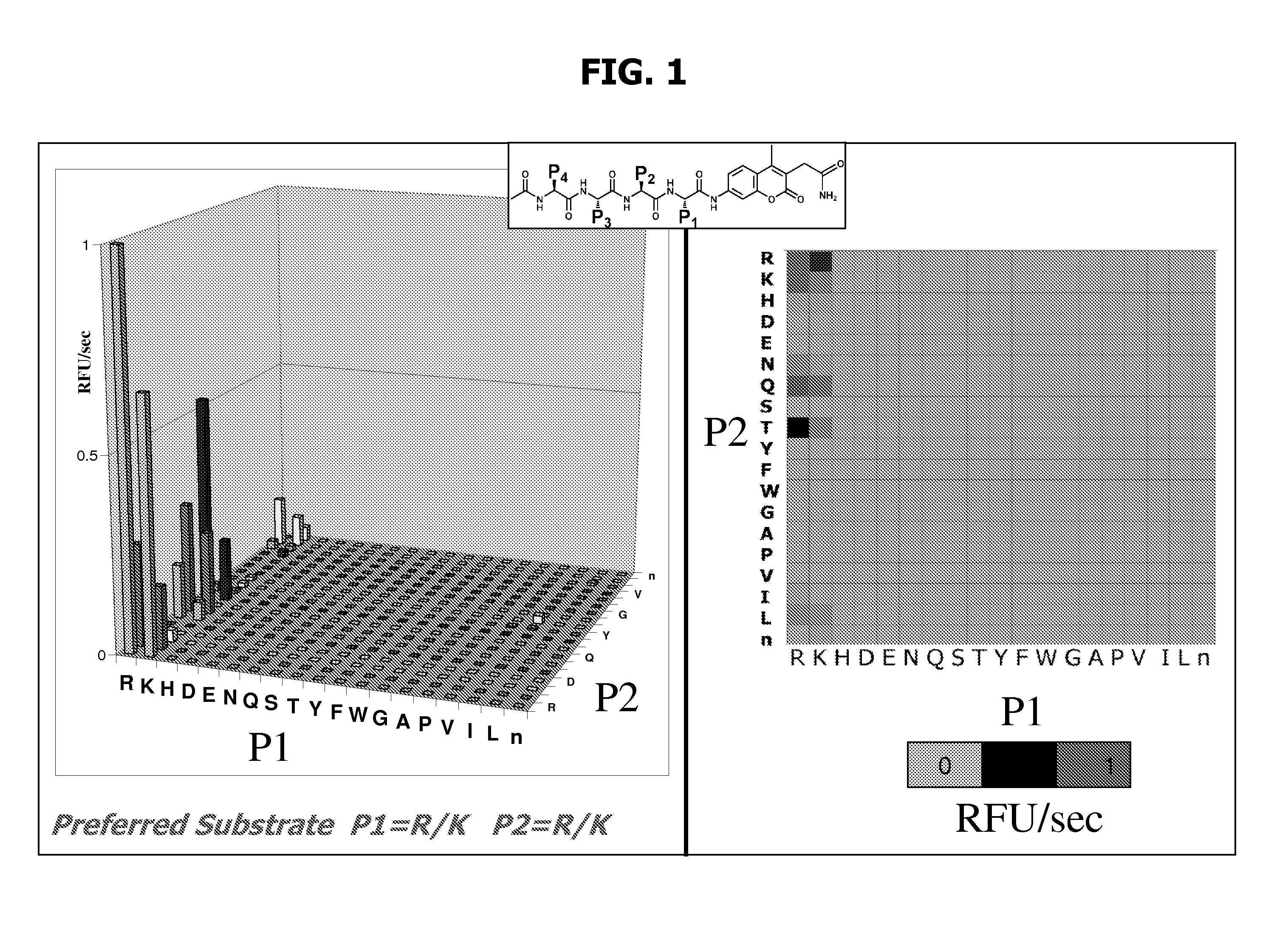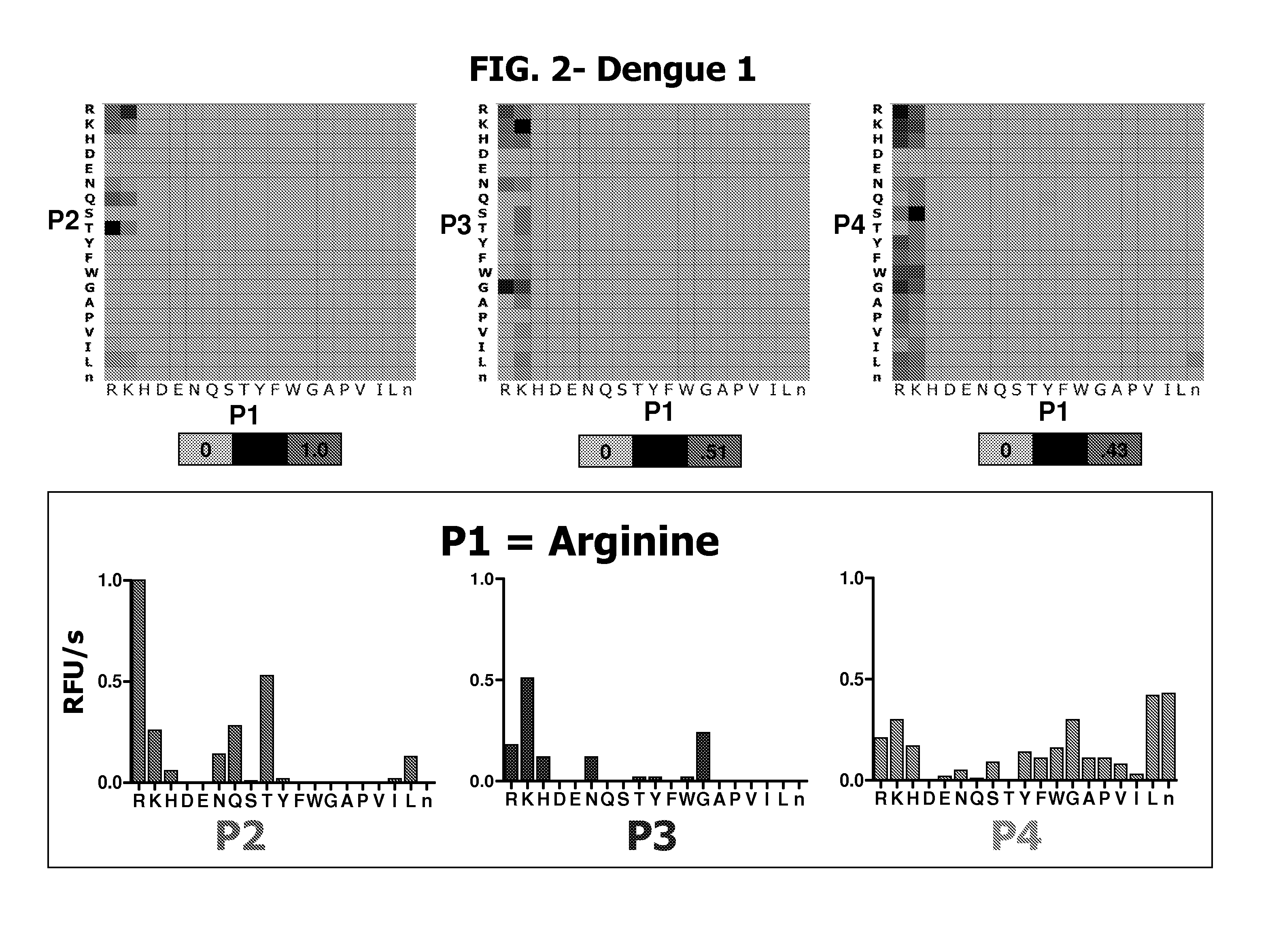Flavivirus protease substrates and inhibitors
a protease and substrate technology, applied in the field of substrate specificity of dengue proteases and substrate design, can solve the problems of no effective treatment for any of the four dengue serotypes, and achieve the effect of reducing the activity of flaviviral ns3 proteas
- Summary
- Abstract
- Description
- Claims
- Application Information
AI Technical Summary
Benefits of technology
Problems solved by technology
Method used
Image
Examples
example 1
Expression and Purification of Dengue NS3 Proteases
[0087] The NS3 proteases from all four dengue virus serotypes were used in the study: dengue1 (Hawaii Strain; ATCC); dengue2 (TSV01 Strain; Accession Number AY037116); dengue3 (S221 / 03 Strain; kind gift from Dr. Eng Eong Ooi of Environmental Health Institute, Singapore); and dengue4 (H241 Strain; ATCC). The recombinant dengue1-4 NS3 proteases (dengue CF40-gly-NS3pro1-185) were expressed in E. coli. and provided by Subhash Vasudevan and Siew Pheng Lim from the Novartis Institute of Tropical Diseases (Singapore). Briefly, the core 40 amino acid region of NS2B preceded by a molecular tag was fused in-frame with NS3 protease domain (amino acid residues 1-185) by a 9 amino acid residue (Gly4SerGly4) linker. Active recombinant dengue protease CF40-gly-NS3pro185 was expressed in BL21RIL cells. Purification was carried out via FLPC using a Hi Trap Nickel affinity column. The fractions containing the protein of interest were de-salted and f...
example 2
Characterization of P1-P4 Substrate Specificity of Dengue Proteases
[0088] P4-P1 specificity of dengue NS3 serine proteases were determined using positional scanning synthetic combinatorial peptide libraries. Fluorogenic substrate libraries were synthesized as previously described in the art (Wang et al., J Biol Chem 278: 15800-8, 2003; Harris et al., Chem. Biol. 8: 1131-1141, 2001; and Harris et al., Proc Natl Acad Sci USA 97: 7754-9, 2000). Each variable position had one of 19 amino acids with cysteine excluded and methionine replaced by the isosteric amino acid norleucine (designated by small case “n” herein).
[0089] The dengue protease enzyme was diluted in assay buffer and added to the library plates. In the two-position fixed tetrapeptide substrate library, the final substrate concentration was approximately 0.25 μM / substrate / well with a total of 400 compounds per well. Accumulation of released fluorophore was monitored at 37° C. at a λex of 380 nm and a λem of 450 nm. The sca...
example 3
Determination of Prime Side Substrate Specificity of Dengue NS3 Proteases
[0090] A focused octapeptide donor-quencher library was synthesized for the elucidation of the P1′-P4′ substrate specificity of dengue NS3 proteases. The non-prime sides of all the substrates in this library contained n-K-R-R (P4-P1), the optimal sequence based on the results of the P1-P4 libraries. The P1′-P4′ region of each substrate contained a tetrapeptide sequence with one position fixed and the other three varied. This library is also called P4-P1 biased, P1′-P4′ positional scanning, donor-quencher substrate library. As illustrated in FIG. 6, there are 8000 compounds in each well of the scanning libraries because each the three variable positions can be one of the 20 amino acid residues (20×20×20).
[0091] The library was synthesized in a positional scanning format using IRORI NanoKan technology (Nicolaou et al., J. Am. Chem. Soc. 122: 9953-9967, 2000). NanoKans were loaded with RINK amide AM resin that h...
PUM
| Property | Measurement | Unit |
|---|---|---|
| Volume | aaaaa | aaaaa |
| Volume | aaaaa | aaaaa |
| Molar density | aaaaa | aaaaa |
Abstract
Description
Claims
Application Information
 Login to View More
Login to View More - R&D
- Intellectual Property
- Life Sciences
- Materials
- Tech Scout
- Unparalleled Data Quality
- Higher Quality Content
- 60% Fewer Hallucinations
Browse by: Latest US Patents, China's latest patents, Technical Efficacy Thesaurus, Application Domain, Technology Topic, Popular Technical Reports.
© 2025 PatSnap. All rights reserved.Legal|Privacy policy|Modern Slavery Act Transparency Statement|Sitemap|About US| Contact US: help@patsnap.com



